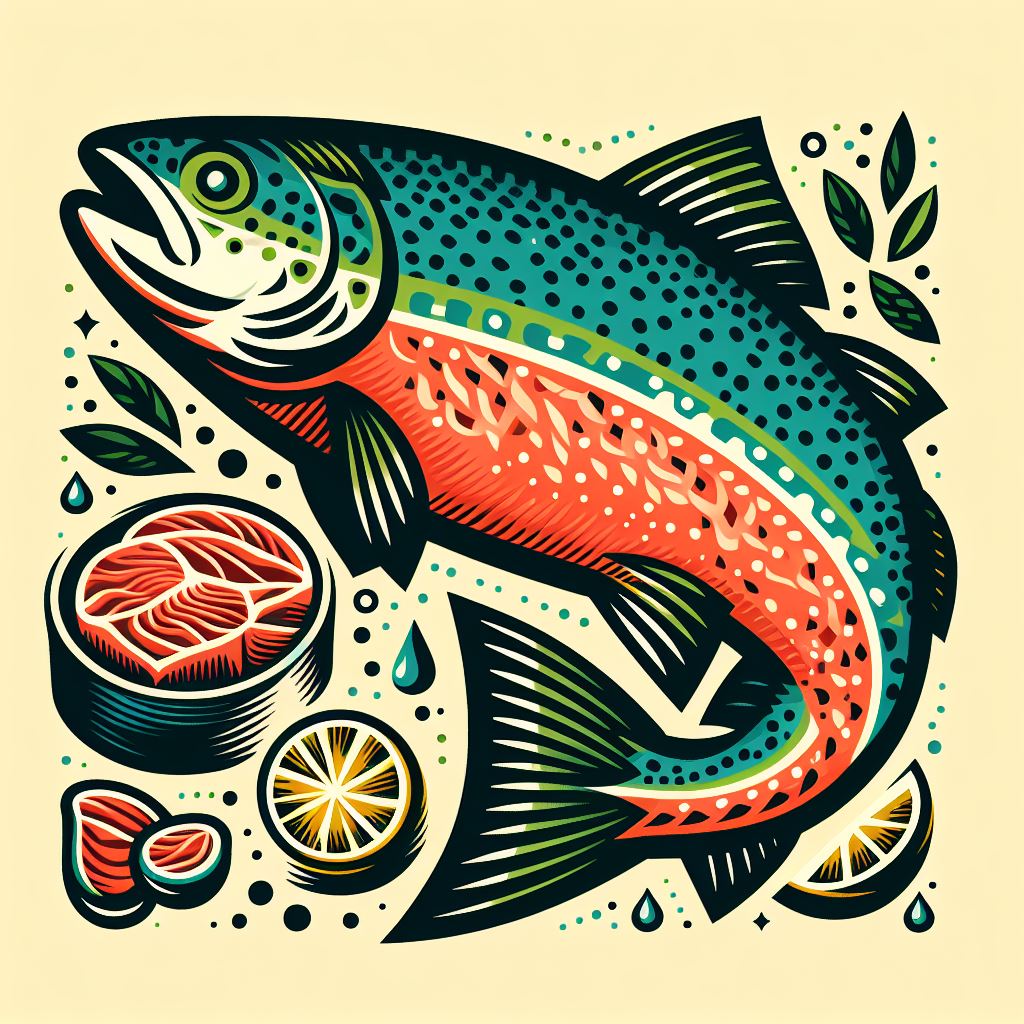In the culinary colosseums where taste reigns supreme and health is the prize, a battle of aquatic titans rages. It’s not just about fish; it’s about philosophy, lifestyle, and, yes, deliciousness. Today, we’re casting our nets into the tumultuous waters of the wild-caught versus farmed salmon debate.
Table of Contents
The Fishy Contenders
Wild-Caught Salmon: The Brad Pitt of the salmon world—rugged, natural, and enviably fit from swimming upstream in pristine waters. This salmon dines on a natural diet, contributing to a robust flavor profile that gourmets and chefs alike swoon over.
Farmed Salmon: The Leonardo DiCaprio—charismatic yet controversial. Raised in aquatic farms, this salmon’s lifestyle and diet are controlled, leading to a richer (and sometimes fattier) flavor. However, the aquaculture environment raises concerns about pollutants and ethical treatment.
Taste Test Showdown
When it comes to flavor, wild-caught salmon often takes the crown with its superior taste and texture—a result of its active, natural lifestyle and diet. Farmed salmon, however, isn’t without its merits, offering a consistently fatty and rich flavor that some palates prefer.
A List for the Sustainability-Minded Gourmet
- Wild-Caught Salmon: Typically lower levels of contaminants, a win for health enthusiasts.
- Farmed Salmon: Advances in fish farming regulations in some countries aim to minimize environmental impact. Do your homework.
- Taste & Texture: Preference varies, but wild-caught is generally leaner and firmer.
The Table of Comparative Delights
| Attribute | Wild-Caught Salmon | Farmed Salmon |
|---|---|---|
| Environment | Pristine, natural waters | Controlled aquaculture settings |
| Flavor Profile | Leaner, more distinct flavor | Fattier, milder flavor |
| Nutritional Value | Higher in Omega-3s due to natural diet | Consistently high in fat content |
| Contaminant Levels | Typically lower | Can vary significantly based on farm practices |
| Price Point | Premium | Generally more affordable |
Culinary Connoisseur’s Compass
- Grill Aficionados: Wild-caught’s firmer texture holds up better on the grill.
- Sustainability Seekers: Research your sources. Opt for salmon from places with strict aquaculture regulations.
- Health Hawks: Lean towards wild-caught for its nutritional edge and lower risk of pollutants.
And now, as we drift gently down the river of culinary enlightenment, we arrive at…
The Q&A Quick Catch
Q1: Is wild-caught salmon really worth the extra dough? A1: If you’re after taste and texture that sing of the sea, then yes, break open that piggy bank!
Q2: Can farmed salmon be a healthy choice? A2: Yes, with careful selection. Look for farms with transparent practices and stringent standards.
Q3: How do I avoid overcooking my gloriously expensive wild-caught salmon? A3: Keep it simple, keep it quick. A few minutes per side in a hot pan should do.
Q4: Are there sustainability concerns with wild-caught salmon? A4: Even the wild isn’t free from drama. Choose sustainably sourced options to ensure the ongoing soap opera of the sea continues.
Q5: Can I taste the difference between wild and farmed salmon, or is it just chef snobbery? A5: Oh, you can taste it. It’s like comparing a well-traveled adventurer with a homebody—both interesting, but in very different ways.
Whether your salmon swims from the wild rivers of Alaska or comes from the carefully managed farms, remember, the best dish is the one made with passion, a sprinkle of knowledge, and a dash of respect for our finned friends. Bon appétit, and may your culinary explorations be as deep and vast as the ocean.

